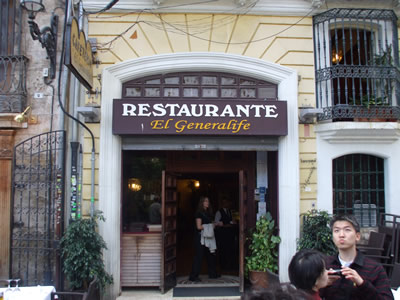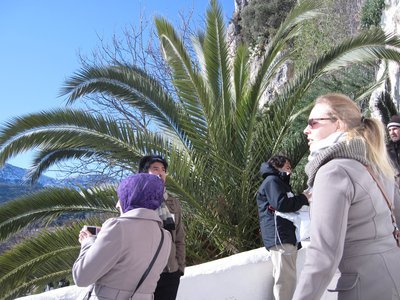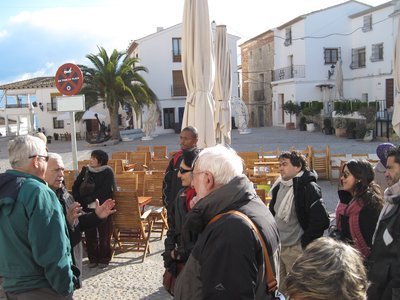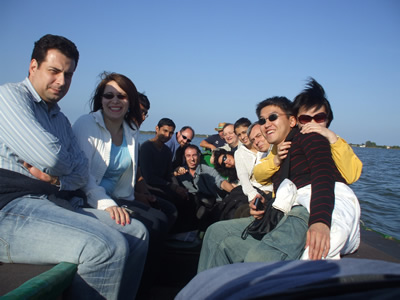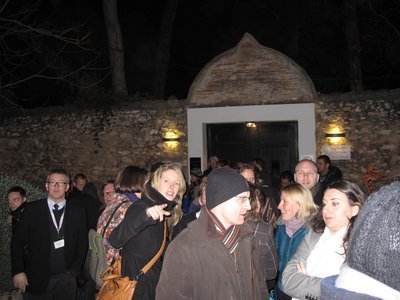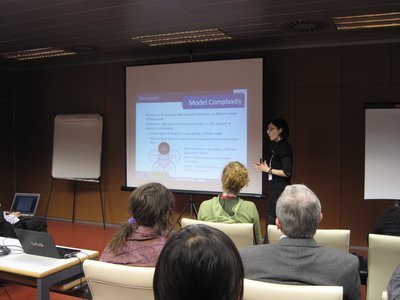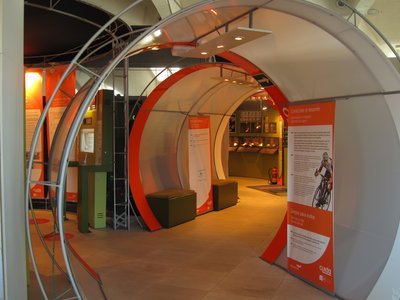Published by IARIA Press (operated by Xpert Publishing Services) | |
Archived in the Open Access IARIA ThinkMind Digital Library | |
Prints available at Curran Associates, Inc. | |
Authors of selected papers will be invited to submit extended versions to a IARIA Journal | |
Editorial Rules
Submission deadline:
November 16, 2025
InfoSys 2026 Congress
Valencia, Spain
Mar 08 - Mar 12, 2026
- ICNS 2026, The Twenty-Second International Conference on Networking and Services
- ICAS 2026, The Twenty-Second International Conference on Autonomic and Autonomous Systems
- ENERGY 2026, The Sixteenth International Conference on Smart Grids, Green Communications and IT Energy-aware Technologies
- WEB 2026, The Fourteenth International Conference on Building and Exploring Web Based Environments
- DBKDA 2026, The Eighteenth International Conference on Advances in Databases, Knowledge, and Data Applications
- SIGNAL 2026, The Eleventh International Conference on Advances in Signal, Image and Video Processing
- BIOTECHNO 2026, The Eighteenth International Conference on Bioinformatics, Biocomputational Systems and Biotechnologies
- AIHealth 2026, The Third International Conference on AI-Health
Editorial Rules
Dear Contributors,
We have compiled a simple list of editorial rules to help you proofread your contributions.
These editorial rules are enforced through the selection process and camera-ready preparation.
-- IARIA Logistics Team
Note: If you have more to add to these recommendations, please email them to nick@iaria.org using subject "Editorial Rules"
General Considerations
- Clarify the relation with the conference topics (either in title, abstract, or introduction section)
- Identify a significant, challenging, not yet solved, or only partially solved problem
- Identify and present the prior art or related work (including references)
- Propose an understandable, defendable, and feasible solution
- Identify the target: theoretical, architectural, modeling, practical implementation, optimization, evaluation of existing solution, etc.
- Select evaluation metrics and show the practicality, scalability, and the benefits of your contribution
- Draw appropriate conclusions and compare your results with the prior art results
- Clarify the contribution with respect to the promises in the abstract, the metrics, and the target
- Clarify the contribution with respect to the previous work (others, yourself)
Title and Authors
- capitalize all nouns, pronouns and verbs, and all other words of four or more letters, e.g., "Robots in Space"
- email addresses of all the authors must be mentioned
- addresses of the institutions must be mentioned
- use of full names is preferred (i.e., preferred: Mary Price Danny Jones vs. not preferred: M.P.D. Jones)
- in case initials are used, leave a space after notations like "M.", e.g., correct: M. N. Jones, incorrect: "M.N. Jones "
- no nicknames in the authors lists
Abstract
- avoid abbreviations in the abstract
- introduce the problem you are dealing with by one succinct sentence
- make it clear why the paper is related to the conference you are submitting to
- specify if it is a survey, an evaluation of existing work, or new ideas with new results
- end the abstract with one sentence reflecting the conclusion of the paper
- don't use references /no [x]s in the abstract/
- follow the style of the template
"Abstract - The paper..... "
Keywords
- no more than 4-5 keywords
- follow the style of the template
"Keywords-component; formatting; style; styling; insert (key words)." - note: use a semicolon between keywords words
- note: the listing ends with a period "."
Footnotes
- there should be no footnotes; either integrate the relevant text within the article, or use a reference
Centering captions (LaTex specific)
Figure and table captions need to be centered. Used the code snippets below as a guide on how to center the captions in your article.
\usepackage{caption}
\captionsetup{font=footnotesize,justification=centering,labelsep=period}
...
\captionsetup{font={footnotesize,sc},justification=centering,labelsep=period}%
\begin{table}[htbp]
\caption{My table.}\label{mytabone}
\centering%
\begin{tabular}{lll}
\hline
\textit{Column 1} & \textit{Column 2} & \textit{Column 3} \\
\hline
a) & Insert more table stuff here. & $\ldots$\\
b) & Insert more table stuff here. & $\ldots$\\
c) & Insert more table stuff here. & $\ldots$\\
\hline
\end{tabular}
\end{table}
\captionsetup{font={footnotesize,rm},justification=centering,labelsep=period}%
General
Language
- keep uniform, across the paper, of either "US-English" and "UK-English, to avoid word variations
e.g., behavior vs. behaviour, modelling vs. modeling, center vs. centre, etc. - we recommend either one or the other, not a mix
- one might need help even in our native language, so
+ have a peer cross-check
+ have a native English speaker or an English speaker specialist help with a cross-check
Capital Letters
- use a capital letter "S" when saying "In Section 2, we..."
- don't use capital letters when saying "There are four sections, ..."
- use a capital letter when "figure" is followed by a number, e.g., "In Figure 3, we...."
- don't use when no number follows, e.g., "The two figures ..."
Structure
- introduction must end with a paragraph describing the structure of the paper
- between two titles and subtitles, have a sentence or a small paragraph, e.g.,
"1. Title 1
We will present...
1.1 Subtitle 1
...................
" - don't end a section with a figure
- don't start a section with a figure
- last section must be "Conclusion and Future Work"
- "Conclusion" must reiterate accomplishments announced in the "Abstract"
note: many submissions fail on this item
Punctuation
- "e.g." is always followed by a comma, so the correct usage is "...substantial, e.g., one and the other"
- no spaces between reference enumerations, e.g., [2][3][5].
- use a uniform figure capture, e.g., "Figure 3. The point of..."
- in text, also use “Figure” at the beginning or inside of a sentence (do not use abbreviation)
- leave a space after a comma, e.g., "Alfa, Omega" and not "Alfa,Omega"
- all abbreviations must be fully spelled when first used, e.g., "...and RR (Remote Retrieval) can be used [x]."; do not expand abbreviations afterwards.
- usually, when there is no confusion, use the reference identifier [x] at the end of the sentence.
- note the difference US- vs. UK style when using quotes
+ US: ".... text text [x]."
+ UK: ".....text text . [x] "
+ the last form may confuse the reader, when used inside a paragraph. - ending a quote and a sentence style
+ US: "..text text text 'bataille'.
+ UK: "..text text text 'bataille.' - in English, the correct use of colon is immediately after a word without a space, e.g., "Peter said: text..."
Correct Spelling
- it is 'Related work" and not "Related works'
- it is Conclusion", and not "Conclusions"
- avoid "Let's ...", use "Let us..." instead
- avoid "I did...", or "We did", except when you want to specifically highlight a team's work; instead, use passive voice, e.g.,"Something was done"
- when used, usually mid-sentence, "i.e." and "e.g." are surrounded by commas
- "e.g.," is used when an example is intended [Latin: "exempli gratia", English: "for example", "for the sake of example", French: "par example"]
- "i.e.," is used when a clarification is needed [Latin: "id est", English: "that is", French: "c'est-a-dire"]
- "etc." [Latin: etcetera, English: and the rest, French; et autre]
- "Q.E.D." [Latin: "quod erat demonstrandum", English: "which was to be demonstrated", French: "ce qu'il fallait démontrer"
+ used for mathematical formulas, at the end of a proof.
Claims & Formulae
- all own claims must be substantially defended
- someone else's statements endorsed by you must be referred to by a reference identifier [x]
- when formulae are used, their source must be disclosed (via references)
- formulae must be numbered by (x)
- your own formulae must be carefully explained and the ownership must be clearly specified
- all the abbreviations or key concepts products, tools, theories, or algorithms must have a reference, possibly even explained
Figures
- don't use blurry figures
- even though one can enlarge an electronic document, use legible text for the figures
- imported figures /even enhanced/ must have their origin specified as a reference (near its caption)
- text inside the figures must be legible
- describe every figure in plain text; do not assume that the reader understand it
- abbreviations in a figure must be explained in the plain text, not on the figure
- place the figures close to the text referring to them
- larger figures or sequences of figures related to a given concept can be placed at the end; better having large figures over two-columns
- all figure captions end with a period "."
Results
- clarify the tools used for obtaining the results /benchmarks, software, hardware, etc./
- for special tools, provide a reference
- when theory is the core, a concrete application greatly increases the value of the contribution
- when pure applications/systems are the main scope of the contribution, stressing out the concepts and theories behind them gives more value to the work
- when simulations are shown, explain why particular parameters, tools, and approaches where chosen
- diagrams must be explained /what?/ and interpreted /why?/
- summarize the results by comparison tables/graphs/etc. with the prior-art; it proves your understanding and makes your message clearer
- defend new proposals by general metrics such as performance, robustness, complexity, scalability, etc. in addition to the metrics specific to your contribution
- conclude with "lesson learned"; mention failed expectations as well, for abetter scientific credibility.
- provide technical details on the next steps by 'future work', usually in "Conclusion and Future Work"
References
- follow the style recommended in the Call for Papers
- URL references should be limited
- URL references must be verified at the time when the camera-ready is submitted
- the checking date must be written in ISO, e.g., [x] <link> 2012.03.22
- non-English language references must also provide an English language translation of the reference title
- references must be uniform in terms of
+ first vs. last name
+ abbreviation, e.g., P. Jones, or Peter Jones - use of the "and"
+ Peter Jones and Patrick Smith /no comma in front of "and"/
+ Peter Jones, Anne DuBois, and Patrick Smith - all references must be used in the text, i.e., referred to
- references are assumed to be the most up to date, unless fundamental concepts are enhanced and one must refer to the original proposal
- note that the freshness of the references gives a good idea on how actual a given contribution is
- page numbers are required; for Latex, use the bibtemplate file accordingly
Plagiarism and Self-Plagiarism
- avoid cut&paste of big portions from your previous work
- when used, any quoted "fragment"must rely on a reference.
- reusing ideas and enhancing them should be based on a paraphrase
- always refer to your published work (in "References"), if small portions are ethically reused
- some images and figures may require explicit accept from the original authors or from those owning the "copyright"
- make it always clear what is "from the literature" and what is "your own contribution"
- there is no shame to give credit to someone else!
- use an "Acknowledgments" section, after "Conclusion and future work", to thank those who contributed, either scientifically or financially, but not at the level to be an author
Special note on Generative-AI
- generative-AI should not be used, referred to, or substituted by any authors
- authors are fully owning the content and are responsible of the entire narrative
- any survey using Generative-AI should be avoided
- authors are encouraged to back-up their reports by their own experiments and conclusions
- failure to comply with these guidelines is considered unethical and contributions will be discharged without notice
Copyright (c) 2006-2025, IARIA











